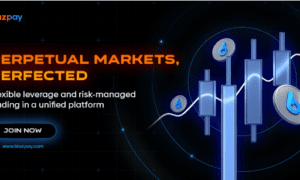The cloud has become an essential part of how companies function and innovate.
Among the myriad cloud computing offerings, Platform as a Service (PaaS) stands proud as an effective solution for simplifying application development and deployment.
This article aims to unravel the intricacies of PaaS, exploring its definition, essential additives, advantages, challenges, and actual international packages.
What is Platform as a Service (PaaS)?
Defining PaaS within the Context of Cloud Computing
Before delving into the specifics of PaaS, it is essential to understand its vicinity in the broader realm of cloud computing.
Cloud computing refers to transporting computing services—including garage, processing electricity, and software—over the internet.
As one of the three fundamental provider fashions alongside Infrastructure as a Service (IaaS) and Software as a Service (SaaS), PaaS supplies a complete platform for utility improvement and deployment. Learn more about the differences between PaaS and SaaS here.
Key Components of PaaS
-
Infrastructure
At its centre, PaaS abstracts the complexities of hardware infrastructure, presenting a ready-made environment for developers.
This allows users to be aware of writing code and building programs without wanting to manage or hold the underlying hardware.
This abstraction simplifies the improvement process and contributes to a greater green use of assets.
-
Development Tools
PaaS equips builders with equipment and resources tailor-made for application development.
From incorporated development environments (IDEs) to version manipulation systems, PaaS structures provide a cohesive ecosystem that streamlines the coding process.
This notably complements collaboration amongst development teams and helps create scalable and robust programs.
-
Middleware
Middleware is pivotal in PaaS, permitting seamless verbal exchange among extraordinary software program components.
This layer of software program ensures that disparate applications can work collectively cohesively, fostering interoperability.
As a result, builders can combine various offerings and functionalities into their applications without grappling with the intricacies of low-degree coding.
Advantages of Using PaaS
-
Cost Efficiency
One of the number one benefits of PaaS is its fee performance.
PaaS follows a pay-as-you-go pricing model by doing away with companies wanting to spend money on and hold their hardware infrastructure.
In this approach, corporations handiest pay for the resources they consume, resulting in huge price financial savings.
-
Time Savings
PaaS hastens the development manner, reducing time-to-market for packages.
With pre-configured improvement environments and a plethora of equipment, builders can focus on coding rather than handling infrastructure-related problems.
This agility is essential in today’s fast-paced business environment.
-
Scalability
Scalability is a trademark of PaaS. Businesses can quickly scale their packages up or down based on demand, ensuring that sources are optimally applied.
This flexibility is mainly remarkable for applications with fluctuating workloads, taking into account efficient aid allocation.
-
Accessibility and Collaboration
PaaS systems are accessible from anywhere with an internet connection, fostering collaboration among geographically dispersed teams.
This accessibility no longer complements teamwork but additionally lets corporations tap into international skills swimming pools, contributing to innovation and variety in improvement initiatives.
Challenges and Considerations
Security
While PaaS offers numerous blessings, protection issues stay a focus. Entrusting touchy data and applications to a third-party PaaS issuer requires a robust protection strategy.
Businesses should cautiously evaluate the safety measures to utilize PaaS vendors and enforce additional safeguards.
Vendor Lock-In
Choosing a PaaS provider necessitates cautious attention to keep away from supplier lock-in.
Businesses must consider the ability-demanding situations associated with migrating far from a selected PaaS platform and adopt strategies to mitigate those dangers.
This consists of adhering to enterprise requirements and ensuring records portability.
Customization Limitations
PaaS’s convenience can come with exchange-offs, in particular in phrases of customization.
Users have to strike stability by leveraging the pre-constructed gear and environments furnished through PaaS systems and meeting the unique requirements of their projects.
Careful attention is critical to keep away from compromising task goals for the sake of comfort.
Real-World Use Cases
-
Application Development and Deployment
Numerous success tales spotlight the impact of PaaS on utility development and deployment.
Companies across industries have leveraged PaaS to streamline their improvement tactics, resulting in quicker time-to-marketplace and multiplied agility.
-
Streamlining DevOps Processes
PaaS supports DevOps practices by fostering collaboration among improvement and operations teams.
The seamless integration of development and deployment tools in PaaS environments enables groups to implement DevOps methodologies successfully.
This alignment contributes to faster development cycles, continuous integration, and advanced general undertaking effects.
Conclusion
Platform as a Service (PaaS) is a transformative pressure inside international cloud computing, providing a platform for green software development platform and deployment.
With expertise in the essential additives, benefits, challenges, and real-world applications of PaaS, groups could make knowledgeable selections on leveraging this era to drive innovation and live competitively in the dynamic digital panorama.
As companies continue to embody cloud answers, a strong draw close of PaaS becomes not just advantageous but imperative for the ones seeking to harness the full potential of cloud computing services.




































